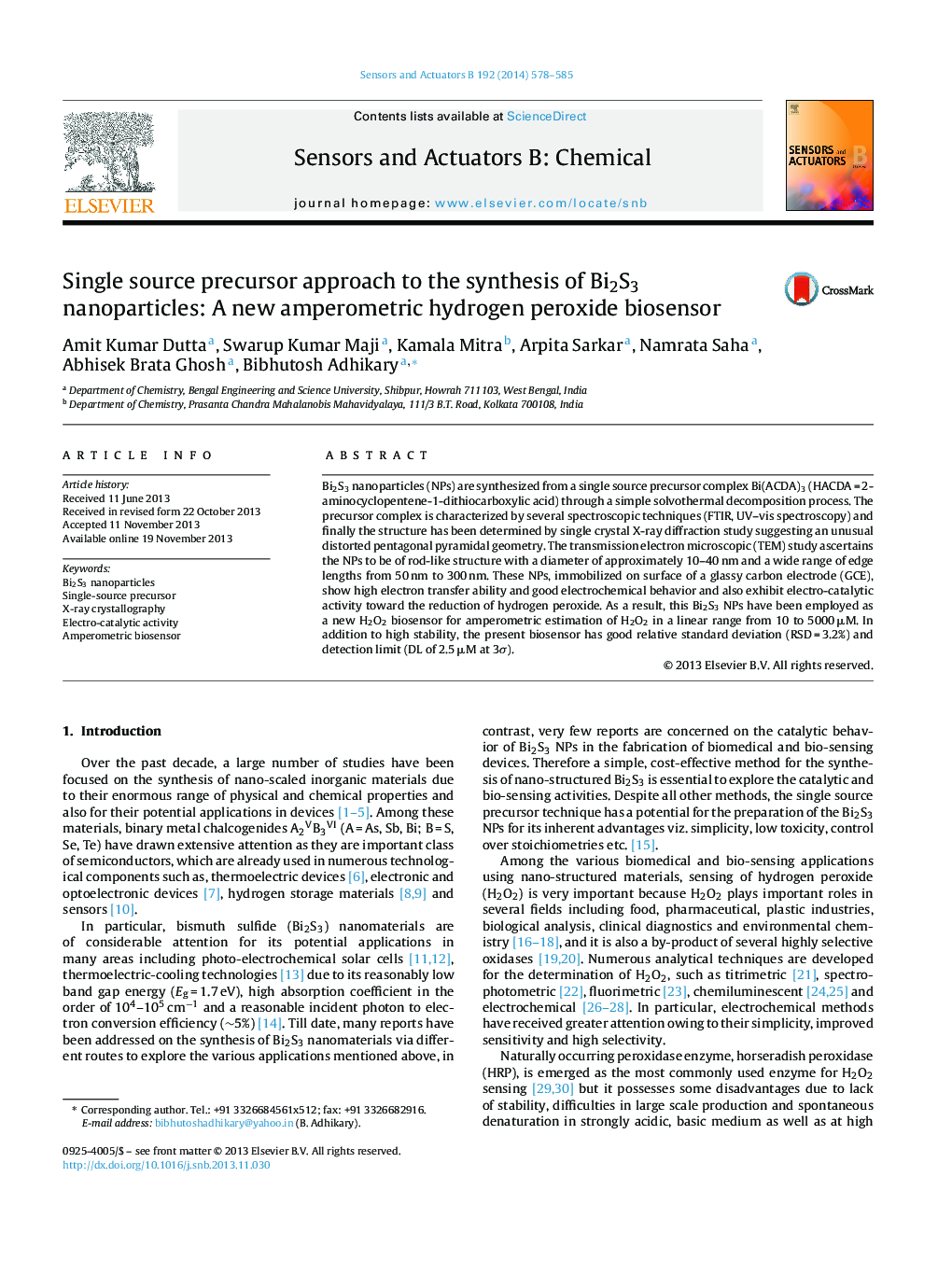| Article ID | Journal | Published Year | Pages | File Type |
|---|---|---|---|---|
| 7147985 | Sensors and Actuators B: Chemical | 2014 | 8 Pages |
Abstract
Bi2S3 nanoparticles (NPs) are synthesized from a single source precursor complex Bi(ACDA)3 (HACDA = 2-aminocyclopentene-1-dithiocarboxylic acid) through a simple solvothermal decomposition process. The precursor complex is characterized by several spectroscopic techniques (FTIR, UV-vis spectroscopy) and finally the structure has been determined by single crystal X-ray diffraction study suggesting an unusual distorted pentagonal pyramidal geometry. The transmission electron microscopic (TEM) study ascertains the NPs to be of rod-like structure with a diameter of approximately 10-40 nm and a wide range of edge lengths from 50 nm to 300 nm. These NPs, immobilized on surface of a glassy carbon electrode (GCE), show high electron transfer ability and good electrochemical behavior and also exhibit electro-catalytic activity toward the reduction of hydrogen peroxide. As a result, this Bi2S3 NPs have been employed as a new H2O2 biosensor for amperometric estimation of H2O2 in a linear range from 10 to 5000 μM. In addition to high stability, the present biosensor has good relative standard deviation (RSD = 3.2%) and detection limit (DL of 2.5 μM at 3Ï).
Keywords
Related Topics
Physical Sciences and Engineering
Chemistry
Analytical Chemistry
Authors
Amit Kumar Dutta, Swarup Kumar Maji, Kamala Mitra, Arpita Sarkar, Namrata Saha, Abhisek Brata Ghosh, Bibhutosh Adhikary,
